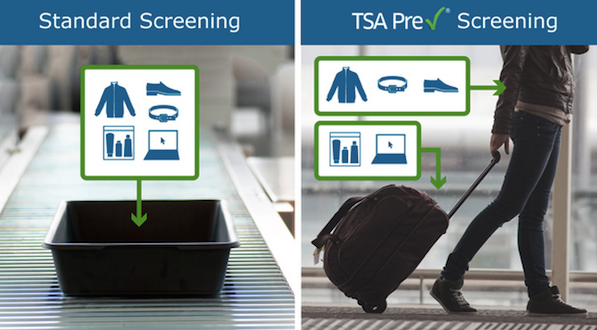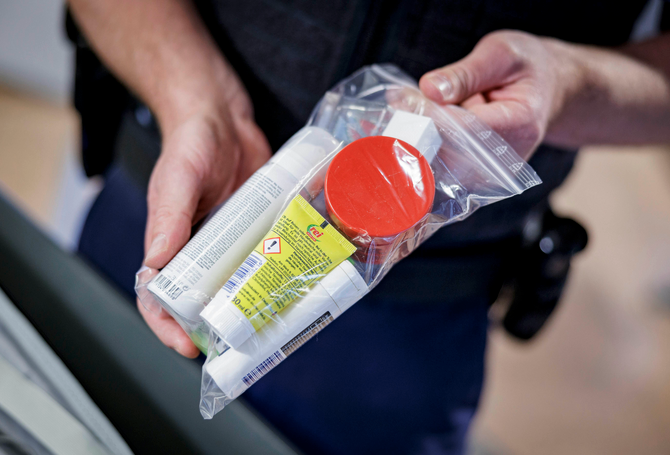Half of the stress of being at an airport, especially for people who don’t travel often, is not being sure what the rules are. In the U.S., we have 2 sets of rules; one for people who have TSA PreCheck, and one for those who don’t. People who have PreCheck have already been vetted as “trusted travelers,” so they only have to participate in some of the rigamarole. People who haven’t been vetted still have to remove their shoes, take their computers and tablets out of their bags, etc. For the millions of people who’ve gone from not having PreCheck to having it can be liberating, yet still confusing until you get used to the “new rules.” (here are the rules for both)

Different counties, different rules
Of course, different countries have their own rules about what must be done at their respective versions of security checkpoints. However, in recent months, some airports in the UK and the EU have had their own “new rules” go into effect when they received new generation CT scanners at their checkpoints. These new scanners allowed passengers to not worry about bringing their liquids in a small plastic bag or even worry much about liquid limits in their carry-on bags.
Unfortunately, the U.S. says we’re not going to see that sort of liberation any time soon.
More unfortunately, effective September 1st, several countries that had become less stringent about liquids in carry-ons have now done an about-face.
September 1st changes
Conde Nasté Traveler is reporting that effective September 1st, airports in all 27 EU countries have reverted to instituting liquid limits in carry-on bags. The rule is said to be temporary until a “tech issue” with the equipment is fixed.
From CNT:
A report by the European Commission, which was sent to the European Civil Aviation Conference (ECAC) last May, outlined there was a “technical issue” with the scanners that prevented the software from reliably detecting harmful substances with content over more than 330ml.
This newest rule is the same as the old one: passengers planning to fly from an EU airport will be restricted to carry-on limits of 100ml containers of liquids, gels, and creams, and only as many as can fit into a 20cm x 20cm bag. These liquids are then placed into a tray, separate from your luggage and other items.

Not all airports in the EU had already switched to the “looser” rules about liquids (roughly 350 of the new scanners are currently in use across 13 EU countries such as Germany, Ireland, Italy, Lithuania, Malta, the Netherlands, and Sweden), but those which had are now back the “old” rule.
Some airports in the UK that had introduced similar new liquid rules have also reverted to the 100ml rule in early June.
There is no word yet on when passengers will be able to again carry liquids with lower limits in their carry-on bags.
Feature photo (cropped): Matthias Ripp via Pxhere
Want to comment on this post? Great! Read this first to help ensure it gets approved.
Want to sponsor a post, write something for Your Mileage May Vary, or put ads on our site? Click here for more info.
Like this post? Please share it! We have plenty more just like it and would love it if you decided to hang around and sign up to get emailed notifications of when we post.
Whether you’ve read our articles before or this is the first time you’re stopping by, we’re really glad you’re here and hope you come back to visit again!
This post first appeared on Your Mileage May Vary

1 comment
I fly out of a small airport in the US. That airport has the scanners that don’t require removing stuff from carry-on bags. The TSA workers there have to tell people to keep stuff in their carry-ons vs. them telling people what must be taken out. They’ve been installed there for awhile now. Going to major airports in the US I find that they do not have these same scanners except for a few lanes for testing purposes (e.g. LAS).